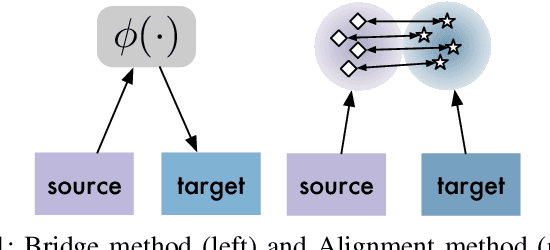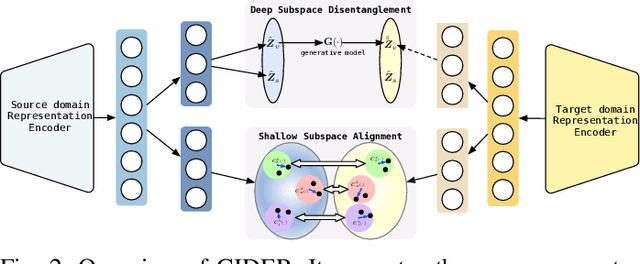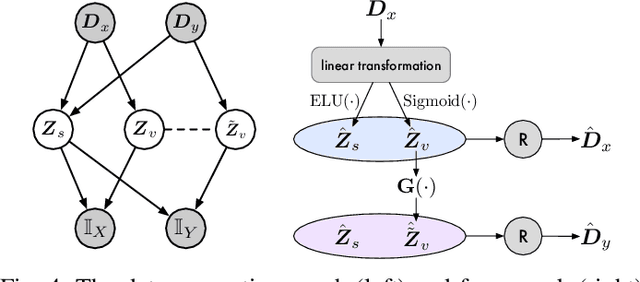Bin Guo
MemoCue: Empowering LLM-Based Agents for Human Memory Recall via Strategy-Guided Querying
Jul 31, 2025Abstract:Agent-assisted memory recall is one critical research problem in the field of human-computer interaction. In conventional methods, the agent can retrieve information from its equipped memory module to help the person recall incomplete or vague memories. The limited size of memory module hinders the acquisition of complete memories and impacts the memory recall performance in practice. Memory theories suggest that the person's relevant memory can be proactively activated through some effective cues. Inspired by this, we propose a novel strategy-guided agent-assisted memory recall method, allowing the agent to transform an original query into a cue-rich one via the judiciously designed strategy to help the person recall memories. To this end, there are two key challenges. (1) How to choose the appropriate recall strategy for diverse forgetting scenarios with distinct memory-recall characteristics? (2) How to obtain the high-quality responses leveraging recall strategies, given only abstract and sparsely annotated strategy patterns? To address the challenges, we propose a Recall Router framework. Specifically, we design a 5W Recall Map to classify memory queries into five typical scenarios and define fifteen recall strategy patterns across the corresponding scenarios. We then propose a hierarchical recall tree combined with the Monte Carlo Tree Search algorithm to optimize the selection of strategy and the generation of strategy responses. We construct an instruction tuning dataset and fine-tune multiple open-source large language models (LLMs) to develop MemoCue, an agent that excels in providing memory-inspired responses. Experiments on three representative datasets show that MemoCue surpasses LLM-based methods by 17.74% in recall inspiration. Further human evaluation highlights its advantages in memory-recall applications.
DeepTraverse: A Depth-First Search Inspired Network for Algorithmic Visual Understanding
Jun 11, 2025Abstract:Conventional vision backbones, despite their success, often construct features through a largely uniform cascade of operations, offering limited explicit pathways for adaptive, iterative refinement. This raises a compelling question: can principles from classical search algorithms instill a more algorithmic, structured, and logical processing flow within these networks, leading to representations built through more interpretable, perhaps reasoning-like decision processes? We introduce DeepTraverse, a novel vision architecture directly inspired by algorithmic search strategies, enabling it to learn features through a process of systematic elucidation and adaptive refinement distinct from conventional approaches. DeepTraverse operationalizes this via two key synergistic components: recursive exploration modules that methodically deepen feature analysis along promising representational paths with parameter sharing for efficiency, and adaptive calibration modules that dynamically adjust feature salience based on evolving global context. The resulting algorithmic interplay allows DeepTraverse to intelligently construct and refine feature patterns. Comprehensive evaluations across a diverse suite of image classification benchmarks show that DeepTraverse achieves highly competitive classification accuracy and robust feature discrimination, often outperforming conventional models with similar or larger parameter counts. Our work demonstrates that integrating such algorithmic priors provides a principled and effective strategy for building more efficient, performant, and structured vision backbones.
JointDistill: Adaptive Multi-Task Distillation for Joint Depth Estimation and Scene Segmentation
May 15, 2025Abstract:Depth estimation and scene segmentation are two important tasks in intelligent transportation systems. A joint modeling of these two tasks will reduce the requirement for both the storage and training efforts. This work explores how the multi-task distillation could be used to improve such unified modeling. While existing solutions transfer multiple teachers' knowledge in a static way, we propose a self-adaptive distillation method that can dynamically adjust the knowledge amount from each teacher according to the student's current learning ability. Furthermore, as multiple teachers exist, the student's gradient update direction in the distillation is more prone to be erroneous where knowledge forgetting may occur. To avoid this, we propose a knowledge trajectory to record the most essential information that a model has learnt in the past, based on which a trajectory-based distillation loss is designed to guide the student to follow the learning curve similarly in a cost-effective way. We evaluate our method on multiple benchmarking datasets including Cityscapes and NYU-v2. Compared to the state-of-the-art solutions, our method achieves a clearly improvement. The code is provided in the supplementary materials.
SURGEON: Memory-Adaptive Fully Test-Time Adaptation via Dynamic Activation Sparsity
Mar 26, 2025Abstract:Despite the growing integration of deep models into mobile terminals, the accuracy of these models declines significantly due to various deployment interferences. Test-time adaptation (TTA) has emerged to improve the performance of deep models by adapting them to unlabeled target data online. Yet, the significant memory cost, particularly in resource-constrained terminals, impedes the effective deployment of most backward-propagation-based TTA methods. To tackle memory constraints, we introduce SURGEON, a method that substantially reduces memory cost while preserving comparable accuracy improvements during fully test-time adaptation (FTTA) without relying on specific network architectures or modifications to the original training procedure. Specifically, we propose a novel dynamic activation sparsity strategy that directly prunes activations at layer-specific dynamic ratios during adaptation, allowing for flexible control of learning ability and memory cost in a data-sensitive manner. Among this, two metrics, Gradient Importance and Layer Activation Memory, are considered to determine the layer-wise pruning ratios, reflecting accuracy contribution and memory efficiency, respectively. Experimentally, our method surpasses the baselines by not only reducing memory usage but also achieving superior accuracy, delivering SOTA performance across diverse datasets, architectures, and tasks.
CrowdHMTware: A Cross-level Co-adaptation Middleware for Context-aware Mobile DL Deployment
Mar 06, 2025Abstract:There are many deep learning (DL) powered mobile and wearable applications today continuously and unobtrusively sensing the ambient surroundings to enhance all aspects of human lives.To enable robust and private mobile sensing, DL models are often deployed locally on resource-constrained mobile devices using techniques such as model compression or offloading.However, existing methods, either front-end algorithm level (i.e. DL model compression/partitioning) or back-end scheduling level (i.e. operator/resource scheduling), cannot be locally online because they require offline retraining to ensure accuracy or rely on manually pre-defined strategies, struggle with dynamic adaptability.The primary challenge lies in feeding back runtime performance from the back-end level to the front-end level optimization decision. Moreover, the adaptive mobile DL model porting middleware with cross-level co-adaptation is less explored, particularly in mobile environments with diversity and dynamics. In response, we introduce CrowdHMTware, a dynamic context-adaptive DL model deployment middleware for heterogeneous mobile devices. It establishes an automated adaptation loop between cross-level functional components, i.e. elastic inference, scalable offloading, and model-adaptive engine, enhancing scalability and adaptability. Experiments with four typical tasks across 15 platforms and a real-world case study demonstrate that CrowdHMTware can effectively scale DL model, offloading, and engine actions across diverse platforms and tasks. It hides run-time system issues from developers, reducing the required developer expertise.
Orchestrating Joint Offloading and Scheduling for Low-Latency Edge SLAM
Feb 23, 2025Abstract:Visual Simultaneous Localization and Mapping (vSLAM) is a prevailing technology for many emerging robotic applications. Achieving real-time SLAM on mobile robotic systems with limited computational resources is challenging because the complexity of SLAM algorithms increases over time. This restriction can be lifted by offloading computations to edge servers, forming the emerging paradigm of edge-assisted SLAM. Nevertheless, the exogenous and stochastic input processes affect the dynamics of the edge-assisted SLAM system. Moreover, the requirements of clients on SLAM metrics change over time, exerting implicit and time-varying effects on the system. In this paper, we aim to push the limit beyond existing edge-assist SLAM by proposing a new architecture that can handle the input-driven processes and also satisfy clients' implicit and time-varying requirements. The key innovations of our work involve a regional feature prediction method for importance-aware local data processing, a configuration adaptation policy that integrates data compression/decompression and task offloading, and an input-dependent learning framework for task scheduling with constraint satisfaction. Extensive experiments prove that our architecture improves pose estimation accuracy and saves up to 47% of communication costs compared with a popular edge-assisted SLAM system, as well as effectively satisfies the clients' requirements.
Towards Economical Inference: Enabling DeepSeek's Multi-Head Latent Attention in Any Transformer-based LLMs
Feb 20, 2025Abstract:Multi-head Latent Attention (MLA) is an innovative architecture proposed by DeepSeek, designed to ensure efficient and economical inference by significantly compressing the Key-Value (KV) cache into a latent vector. Compared to MLA, standard LLMs employing Multi-Head Attention (MHA) and its variants such as Grouped-Query Attention (GQA) exhibit significant cost disadvantages. Enabling well-trained LLMs (e.g., Llama) to rapidly adapt to MLA without pre-training from scratch is both meaningful and challenging. This paper proposes the first data-efficient fine-tuning method for transitioning from MHA to MLA (MHA2MLA), which includes two key components: for partial-RoPE, we remove RoPE from dimensions of queries and keys that contribute less to the attention scores, for low-rank approximation, we introduce joint SVD approximations based on the pre-trained parameters of keys and values. These carefully designed strategies enable MHA2MLA to recover performance using only a small fraction (0.3% to 0.6%) of the data, significantly reducing inference costs while seamlessly integrating with compression techniques such as KV cache quantization. For example, the KV cache size of Llama2-7B is reduced by 92.19%, with only a 0.5% drop in LongBench performance.
AntLM: Bridging Causal and Masked Language Models
Dec 04, 2024Abstract:Causal Language Modeling (CLM) and Masked Language Modeling (MLM) are two mainstream learning paradigms based on Transformer networks, specifically the Decoder-only and Encoder-only architectures. The strengths of each paradigm in downstream tasks have shown a mix of advantages and disadvantages. In the past BabyLM Challenge 2023, although the MLM paradigm achieved the best average performance, the CLM paradigm demonstrated significantly faster convergence rates. For the BabyLM Challenge 2024, we propose a novel language modeling paradigm named $\textbf{AntLM}$, which integrates both CLM and MLM to leverage the advantages of these two classic paradigms. We chose the strict-small track and conducted experiments on two foundation models: BabyLlama, representing CLM, and LTG-BERT, representing MLM. During the training process for specific foundation models, we alternate between applying CLM or MLM training objectives and causal or bidirectional attention masks. Experimental results show that combining the two pretraining objectives leverages their strengths, enhancing overall training performance. Under the same epochs, $AntLM_{BabyLlama}$ improves Macro-average by 1%, and $AntLM_{LTG-BERT}$ achieves a 2.2% increase over the baselines.
AdaScale: Dynamic Context-aware DNN Scaling via Automated Adaptation Loop on Mobile Devices
Dec 01, 2024Abstract:Deep learning is reshaping mobile applications, with a growing trend of deploying deep neural networks (DNNs) directly to mobile and embedded devices to address real-time performance and privacy. To accommodate local resource limitations, techniques like weight compression, convolution decomposition, and specialized layer architectures have been developed. However, the \textit{dynamic} and \textit{diverse} deployment contexts of mobile devices pose significant challenges. Adapting deep models to meet varied device-specific requirements for latency, accuracy, memory, and energy is labor-intensive. Additionally, changing processor states, fluctuating memory availability, and competing processes frequently necessitate model re-compression to preserve user experience. To address these issues, we introduce AdaScale, an elastic inference framework that automates the adaptation of deep models to dynamic contexts. AdaScale leverages a self-evolutionary model to streamline network creation, employs diverse compression operator combinations to reduce the search space and improve outcomes, and integrates a resource availability awareness block and performance profilers to establish an automated adaptation loop. Our experiments demonstrate that AdaScale significantly enhances accuracy by 5.09%, reduces training overhead by 66.89%, speeds up inference latency by 1.51 to 6.2 times, and lowers energy costs by 4.69 times.
Towards Robust Cross-Domain Recommendation with Joint Identifiability of User Preference
Nov 26, 2024



Abstract:Recent cross-domain recommendation (CDR) studies assume that disentangled domain-shared and domain-specific user representations can mitigate domain gaps and facilitate effective knowledge transfer. However, achieving perfect disentanglement is challenging in practice, because user behaviors in CDR are highly complex, and the true underlying user preferences cannot be fully captured through observed user-item interactions alone. Given this impracticability, we instead propose to model {\it joint identifiability} that establishes unique correspondence of user representations across domains, ensuring consistent preference modeling even when user behaviors exhibit shifts in different domains. To achieve this, we introduce a hierarchical user preference modeling framework that organizes user representations by the neural network encoder's depth, allowing separate treatment of shallow and deeper subspaces. In the shallow subspace, our framework models the interest centroids for each user within each domain, probabilistically determining the users' interest belongings and selectively aligning these centroids across domains to ensure fine-grained consistency in domain-irrelevant features. For deeper subspace representations, we enforce joint identifiability by decomposing it into a shared cross-domain stable component and domain-variant components, linked by a bijective transformation for unique correspondence. Empirical studies on real-world CDR tasks with varying domain correlations demonstrate that our method consistently surpasses state-of-the-art, even with weakly correlated tasks, highlighting the importance of joint identifiability in achieving robust CDR.
 Add to Chrome
Add to Chrome Add to Firefox
Add to Firefox Add to Edge
Add to Edge